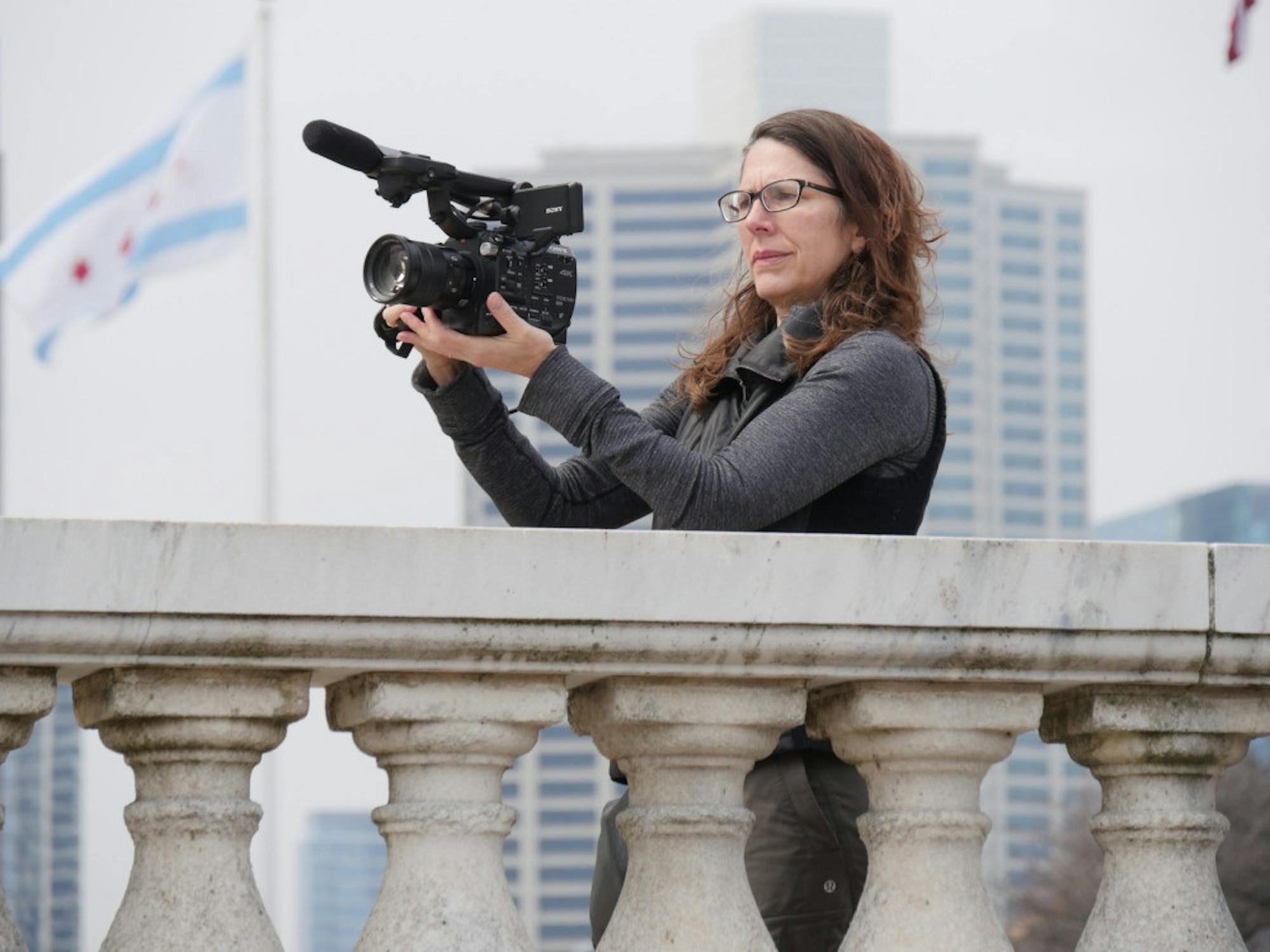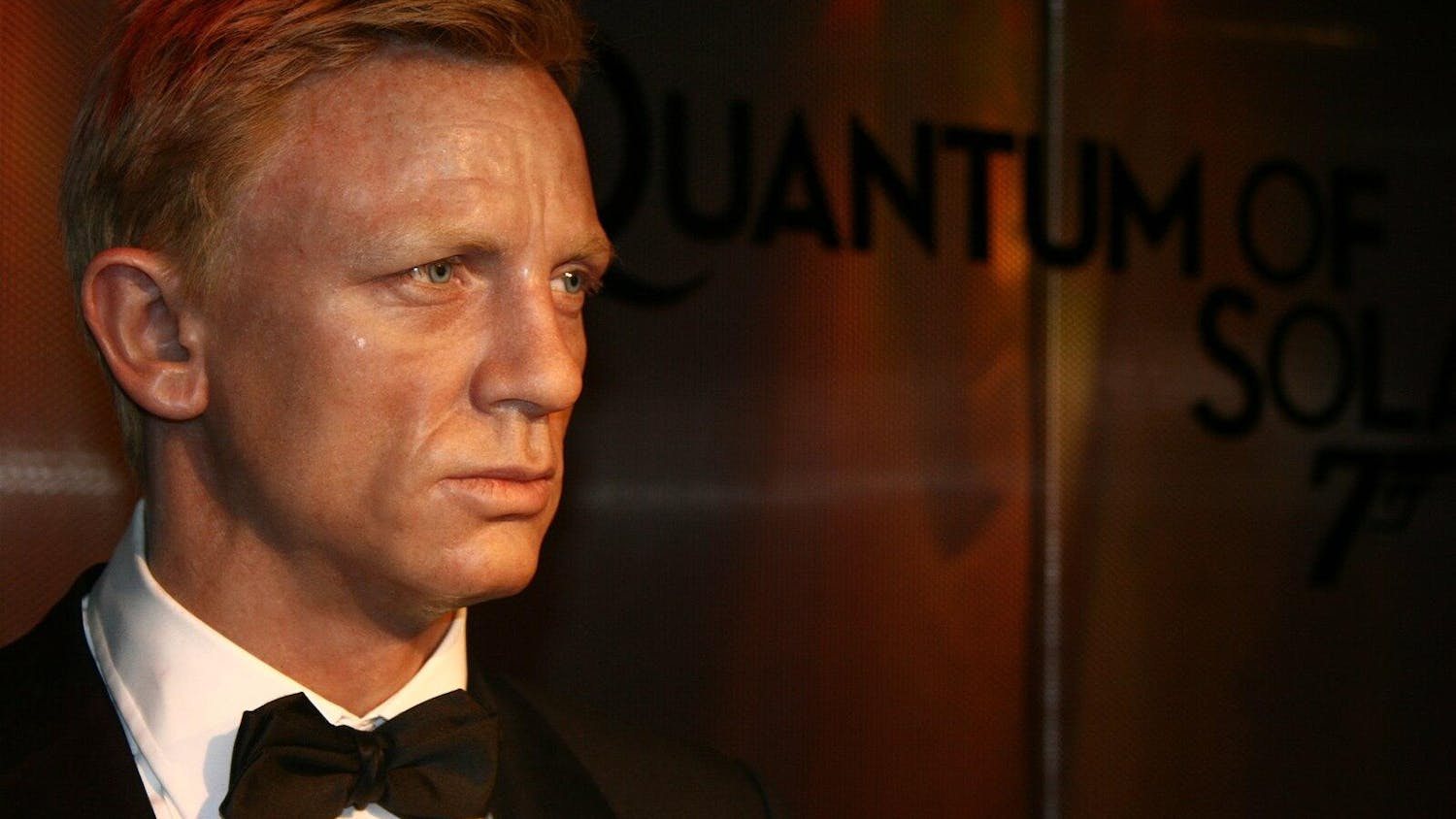Last week, the Daily had the opportunity to attend two screenings of Women Take the Reel, a film festival hosted at universities across the Boston area. Taking place in Barnum Hall, the event showcased two female-directed documentaries, including the award-winning documentary “Brainwashed: Sex-Camera-Power” (2022) and the new Half the History short film “Tapping Into Our Past, Tapping Into Our Future: Ayodele Casel” (2022).
“Tapping Into Our Past, Tapping Into Our Future: Ayodele Casel” is co-directed by Tufts’ very own Jennifer Burton, who is a professor of the practice in the Department of Theatre, Dance, and Performance Studies, though she frequently works in the film and media studies department.
In an interview with the Daily, Burton discussed using film as a way to reveal untold history.
Burton began the Half the History project last year with Julie Dobrow, another Tufts faculty member. The project is dedicated to revealing less-known stories of female figures through short-form biographies, films and podcasts.
“Only 18% of the biographies [on Wikipedia] are about women,” Burton said. “We have a long way to go in terms of telling all these incredible stories.”
In the latest installment of the Half the History project, Burton follows dancer and choreographer Ayodele Casel. Produced by Burton’s production company, Five Sisters and the Tufts Production team, the film explores Casel’s experience as a woman of color in tap dancing.
Casel takes us on a journey of dance, embodying the very figures that shaped the history of tap dancing. Some of the dancers featured include Lois Bright, Juanita Pitts, Cora LaRedd and many others — all women who laid the groundwork for Casel. Thanks to old footage and savvy editing techniques, the viewer can watch Casel dance right along with these influential figures.
For Burton, this filming choice was about working with what they know.
“I think that we really are engaging with the material that we know in really direct ways,” Burton said. “When we were talking with Ayodele, so much of it was really about taking these steps and embodying them, and embodying history.”
Casel taps her way through an unseen history, bringing to light both her skill and the skill of those who came before her.
Following the short film came “Brainwashed,” a lecture-turned-documentary directed by Nina Menkes. The doc was adapted from Menkes’ “cinematic experience” lecture, “Sex and Power: The Visual Language of Oppression.” With over 175 movie clips ranging from 1896 to 2020, the film is a truly visual experience. Through this cinematic exploration, Menkes reveals how ideas of women have become embedded in our culture through the visual grammar of cinema — including lighting, framing, angles and movement — thus contributing to sexual and employment discrimination in the film industry.
Men and women are filmed differently, Menkes believes. These are differences you may not have noticed before, but they are pervasive cinematic techniques. She breaks it down into the simplest of terms: subject and object. Men look, women are looked at. Often, women’s bodies are chopped up by camera framing into fragmented body parts — reducing them to the body parts taking up the screen. If not fragmented, their bodies are on general display for the audience. This effect can be augmented by camera movement, like slow pans along a woman’s passive body.
Lighting also contributes to this distorted vision of women; men are typically depicted in what Menkes calls 3D lighting, putting all their scraggles and wrinkles in full view. Women, however, are placed in 2D, fuzzy lighting, reducing them to picturesque, unblemished versions of humans. Menkes affirms that these filmic traits are rooted in the “male gaze,” a term first coined by Laura Mulvey in her 1975 essay “Visual Pleasure and Narrative Cinema.”
The rest of Menkes’ thesis revolves around this concept of the male gaze, which refers to the depiction of women as seen by the male spectator. The film is interspersed with various interviews with women in the industry, including Julie Dash, Eliza Hittman and Mulvey herself —the “original gangster” film theorist, according to Menkes. Mulvey herself admits that she only mentioned the male gaze once in her essay, but “it’s become its dominant memory.” Yet, Menkes continues to employ this concept to show that male and female power dynamics are encoded in cinematic language, affecting women’s place both in front of and beyond the camera.
The documentary shows nearly 200 films throughout its length. One after the other, Menkes breaks down the shot design of fan-favorite films, revealing their sexist connotations.
For Burton, it was this repetition that made the film so effective.
“So often, we’ll get into the complexity of it all,” Burton said. “There was something really powerful to me about just saying, ‘It’s here, it’s here, it’s here.’”
This repetition certainly serves its purpose. By the end of the film, you will understand just how invasive these portrayals are throughout cinematic history.
Many of the scenes surround the subject of desire and sex. Shots are pulled from films like “Eyes Wide Shut” (1999) and “Titane” (2021), which undoubtedly cover matters of sex. When dealing with scenes that surround the topic of desire, they will tend to be shot in a more consistent and predictable way — whether that be slow-motion sex scenes or provocative dancing. Menkes’ point was better proved when she showed film scenes that weren’t inherently sexual in the context of the narrative.
One such example was Brian de Palma’s “Carrie” (1976), whose opening credit scene consists of naked teenage girls prancing around their locker room and taking steamy showers. Not necessarily crucial to the story, huh?
Menkes explains how female directors also fall victim to sexist film techniques. She explores some who “do it right” and others who she believes contribute to harmful portrayals of women. Julia Ducournau, director of the previously mentioned “Titane,” is pitted against Chloe Zhao, director of the much different “Nomadland” (2020). According to Menkes, Ducournau’s presentation of her female character grinding atop a car made the camera predatory, thus contributing to a predatory culture. Zhao, however, was a mark of real change to Menkes, as her female lead not once stripped and did a sexy dance.
So, who does it right? Why, Menkes herself, of course. Quite unabashedly, she lauds her work as the golden standard of female portrayal. In her films, women engage in sex, but the act is seen as laborious and unenjoyable. In this sense, Menkes subverts the sexualized gaze of women.
The next steps for women in the film industry are left rather unclear. The talking heads briefly discuss how they would reconfigure an objectifying scene from the 2019 film “Bombshell.” But their fixes would simply include increased censorship. While nudity is not always necessary in filmic portrayals of women, the context is ignored yet again here. Desire and sex are undoubtedly important topics to discuss and topics that are not going anywhere anytime soon. To simply say “show less nudity” or “make sex unenjoyable” is reductive and undermines the nuances of filmmaking and desire.
Following the film, Menkes joined the screening via Zoom for a Q&A. Someone asked what Menkes thought the next steps for filmmaking were. Was it establishing a female gaze in cinema? Menkes was quick to say no. She doesn’t believe in all-encompassing blanket terms like that. The female gaze is certainly not something to scoff at, but Menkes’ point was that film portrayals are not about gender but about power.
Burton said it best: “It’s not the camera, it’s who’s holding the camera. It’s not male or female, necessarily. It’s someone who wants to exert power over someone else.”






